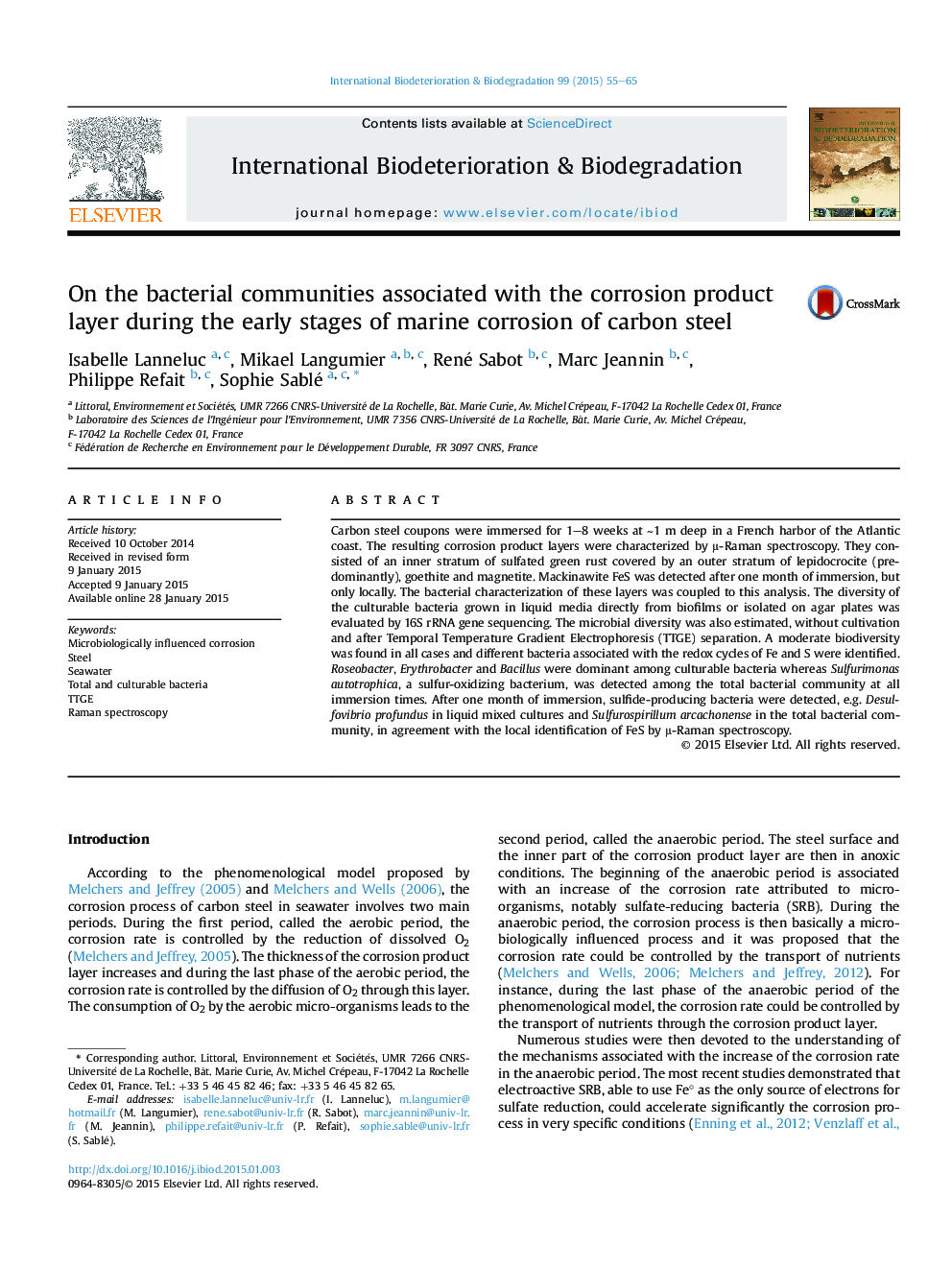| Article ID | Journal | Published Year | Pages | File Type |
|---|---|---|---|---|
| 4364643 | International Biodeterioration & Biodegradation | 2015 | 11 Pages |
•The corrosion product layers are characterized by a moderate bacterial diversity.•A significant discrepancy between the total and culturable bacteria is shown.•FeS and sulfidogenic bacteria are detected locally as soon as one month of immersion.•Sulfated Green Rust is the Fe(II)-based corrosion product in the absence of SRB.
Carbon steel coupons were immersed for 1–8 weeks at ∼1 m deep in a French harbor of the Atlantic coast. The resulting corrosion product layers were characterized by μ-Raman spectroscopy. They consisted of an inner stratum of sulfated green rust covered by an outer stratum of lepidocrocite (predominantly), goethite and magnetite. Mackinawite FeS was detected after one month of immersion, but only locally. The bacterial characterization of these layers was coupled to this analysis. The diversity of the culturable bacteria grown in liquid media directly from biofilms or isolated on agar plates was evaluated by 16S rRNA gene sequencing. The microbial diversity was also estimated, without cultivation and after Temporal Temperature Gradient Electrophoresis (TTGE) separation. A moderate biodiversity was found in all cases and different bacteria associated with the redox cycles of Fe and S were identified. Roseobacter, Erythrobacter and Bacillus were dominant among culturable bacteria whereas Sulfurimonas autotrophica, a sulfur-oxidizing bacterium, was detected among the total bacterial community at all immersion times. After one month of immersion, sulfide-producing bacteria were detected, e.g. Desulfovibrio profundus in liquid mixed cultures and Sulfurospirillum arcachonense in the total bacterial community, in agreement with the local identification of FeS by μ-Raman spectroscopy.
